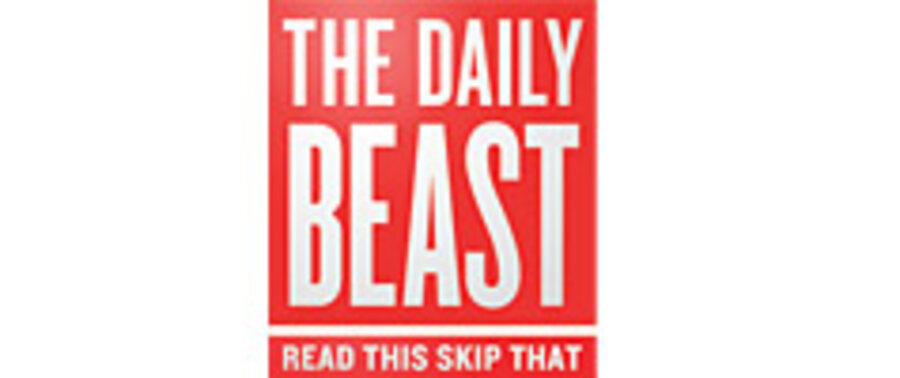Strauss-Kahn: Wealthy wife rides to his rescue
Loading...
Newsweek/DailyBeast
Anne Sinclair was not exactly a household name outside of France until her errant husband, Dominique Strauss-Kahn, created headlines around the globe. But when the former head of the International Monetary Fund and French presidential aspirant, known for his louche behavior, was indicted for attempted rape last week and his stylish spouse stepped up to post $6 million in bail and bond, the cognoscenti began to buzz. Where did all her money come from?
Not only did the sophisticated and comely TV figure, known as the Barbara Walters of France, pick up the tab for DSK’s release, she also plunked down thousands for a temporary refuge near Wall Street—he’s since moved to a Tribeca building—and $200,000 for 24-hour security guards for the duration of his trial. There is also a $4 million home in Georgetown, a lavish apartment on the trendy Place des Vosges—one of the priciest pieces of real estate in Paris—and a comfortable hideaway near Marrakesh, Morocco.
Obviously, Anne Sinclair is an extremely well-heeled woman standing firmly her man. But what is the source of her stunning wealth?
Her canny maternal grandfather, noted modern-art dealer Paul Rosenberg, amassed a fortune by befriending, collecting, and selling Picasso, Braque, Léger, and Matisse throughout the first half of the 20th century. (In 2007, Sinclair decided to dispense with a Matisse she had inherited and quickly realized a cool $33 million plus.) Rosenberg was known as a “clean dealer,” unlike a number of his ilk, and catered to the crème de la crème of American society and the world of art.
“There has never been any hint of scandal about him,” says Kimberly Jones, assistant curator of French paintings at the National Gallery of Art. “He was a pivotal figure; the go-to guy for cutting-edge contemporary art.”
Rosenberg started his career at 18, when he acquired two van Gogh drawings and a Manet portrait for $220 for his father’s Parisian gallery, and at 20 took over the business, expanding to London and turning both salons into necessary pit stops for high-profile Americans awash in cash. When the Nazis invaded France, much of his art was looted—only a fraction has been located and returned—but Rosenberg, his son Alexandre, his daughter Micheline, and her husband, Joseph Robert Schwartz, escaped. They fled to New York in 1940, and he set up shop on East 57th Street. His granddaughter, Anne, was born in 1948, and her father changed his last name from Schwartz to Sinclair the following year.
“Rosenberg had an impeccable reputation, was greatly respected,” says art historian and Picasso biographer John Richardson, who recalls Picasso and Rosenberg living in adjoining Paris apartments and the artist stepping out on the balcony frantically waving his latest oeuvre in order to attract the attention of his friend and dealer. Picasso also served as a witness for the birth of Rosenberg’s son, Alexandre. “Rosenberg was very active on both sides of the Atlantic. Very proper, not wildly adventurous and shocked by erotic art,” continues Richardson. “Picasso referred to him as a ‘fuddy-duddy’ when he refused to show one of his paintings because it delineated an anus. Believe me he was furious.”
Throughout his life, Rosenberg remained a key player, because he created his own stunning private collection—much of which he refused to sell—and because early on, he was clever enough to obtain exclusive buying rights for three masters—Picasso, Braque, and Matisse, and every painting he collected was purchased directly from the artists. He also served as the pipeline between the moneyed class and a variety of Impressionists: Cezanne, Renoir, Degas, and Seurat. “The rich felt safe with him,” explains John Richardson. “He was not a revolutionary, and not prepared to take risks.”
Those who followed his sage advice, included MoMa, which he helped create, the Philadelphia Museum of Art, and a raft of plutocrats: Wall Street tycoon Chester Dale, and art patrons Douglas Dillon and Marjorie and Duncan Phillips, who were early devotees of the avant-garde. The Phillipses created the Phillips Collection in Washington, D.C., and frequently bought in large units to bulk and fill up a room with an individual artist’s work. Braque was a particular favorite, and they started purchasing his works from Rosenberg beginning in 1934, and continued to acquire works by Braque until the 1960s. Duncan Phillips once tried to persuade Rosenberg to sell him some Picassos from his private treasure trove, to no avail. “They are the expression of my life,” Rosenberg told him.
Chester Dale, a discerning and no-nonsense art aficionado, swept into Rosenberg’s Paris atelier during the 1930s, and snapped up a couple of Matisses and five Picassos over a few days, and eventually walked off with 25 paintings, which became the core of his renowned collection.
The Rosenberg dealership continued to flourish over the years and when Micheline, Anne Sinclair’s mother, died in 2007, Anne was her sole heir and is reportedly worth tens of millions in art alone. The mystery remains—where are all these paintings; what do they consist of? Sinclair has been silent on the subject, although shortly after her mother’s death she donated a 1918 Picasso painting of Anne’s grandmother and mother, painted for Paul Rosenberg, to the Picasso Museum in Paris.
Now, with her spouse, whom she defends like a Mama Grizzly, facing an ugly and expensive trial, she may be forced to fall back on her considerable resources. Who knows? If a Picasso, Degas or Renoir suddenly shows up on the market, it might carry the provenance of Paul Rosenberg and dispel some of the secrecy surrounding the glamorous Anne Sinclair.
Sandra McElwaine is a Washington Correspondent for The Daily Beast. She has been a reporter for The Washington Star, The Baltimore Sun, a correspondent for CNN and People, and Washington editor of Vogue and Cosmopolitan. She has also written for The Washington Post, Time, and Forbes.






